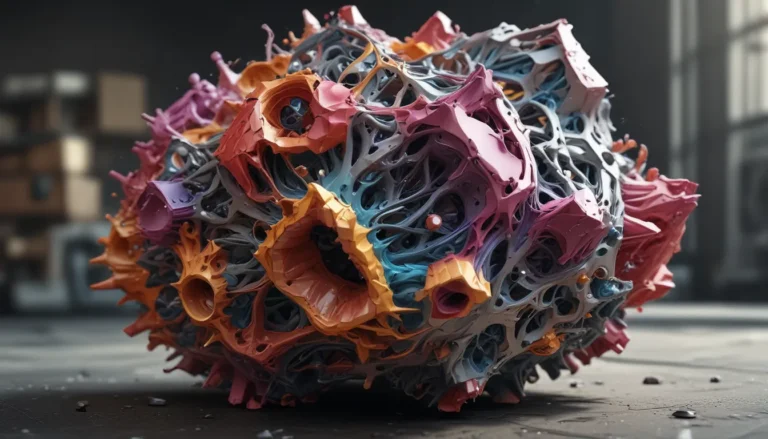A Note About Images: The images used in our articles are for illustration purposes only and may not exactly match the content. They are meant to engage readers, but the text should be relied upon for accurate information.
Welcome to the captivating world of Sol-Gel processes, where solutions are magically transformed into durable materials with unique properties. This fascinating technique, widely used in materials science and chemistry, is revolutionizing industries such as electronics, optics, and biomedical engineering. Beyond its practical applications, the Sol-Gel process holds a rich and enigmatic nature that continues to intrigue researchers worldwide.
Delving into the Origins of Sol-Gel Processes
- The Sol-Gel process was first observed by Eberhard Schulz and Friedrich Funk in the late 1800s, long before its practical applications were explored.
- This technique involves the controlled transition of a solution (sol) to a solid material, without the need for high temperatures and pressure.
Unlocking the Potential of Sol-Gel Coatings
- Sol-Gel coatings enhance surfaces, making them more durable, corrosion-resistant, and even self-cleaning.
- These coatings find applications in industries such as automotive, aerospace, and electronics, shaping advancements in various fields.
Discovering Unique Properties of Sol-Gel-Derived Materials
- Materials produced through the Sol-Gel process exhibit a wide range of optical properties, including transparency, luminescence, and refractivity.
- This technique enables the synthesis of nanoscale materials with enhanced properties for applications in fields like medicine and electronics.
Exploring the Versatility of Sol-Gel Processes
- Sol-Gel-derived materials can serve as effective catalysts in chemical reactions, fuel cells, and environmental remediation.
- These materials can also be tailored to exhibit bioactive properties for applications in drug delivery systems, tissue engineering, and biosensors.
Embracing Green Alternatives with Sol-Gel Processes
- The Sol-Gel process offers a greener alternative to traditional methods, operating at lower temperatures and without harsh chemicals.
- Materials derived from Sol-Gel processes can be used in energy storage devices like batteries, supercapacitors, solar cells, and fuel cells.
Creating Hybrid Materials and Thin Films with Sol-Gel Techniques
- The Sol-Gel process enables the creation of hybrid materials by combining organic and inorganic precursors.
- This technique can also be used for fabricating thin films onto various substrates for applications in electronics, protective coatings, and more.
Harnessing the Power of Sol-Gel Coatings in Harsh Environments
- Sol-Gel-derived coatings offer excellent resistance to chemicals and high temperatures, making them ideal for protecting materials in aerospace components, industrial equipment, and automotive parts.
In conclusion, the Sol-Gel process is a versatile and fascinating technique that continues to shape advancements in various industries. From its historical origins to its wide range of applications and potential for future scientific discoveries, Sol-Gel processes hold great promise in fields like energy storage, catalysis, and sensors. As researchers continue to explore and expand the boundaries of this remarkable chemical transformation, we can expect even more exciting applications and innovations in the years to come.
Frequently Asked Questions
- What is the Sol-Gel process?
-
The Sol-Gel process is a versatile technique used to synthesize ceramic and glass materials through controlled chemical reactions in a liquid solution called the sol.
-
What are some applications of the Sol-Gel process?
-
The Sol-Gel process finds applications in electronics, optics, biomedicine, and coatings, enabling the fabrication of thin films, optical fibers, ceramic composites, and bioactive materials.
-
How does the Sol-Gel process differ from traditional synthesis methods?
-
Unlike conventional methods, the Sol-Gel process allows for the synthesis of materials at low temperatures with better control over structure and properties.
-
Is the Sol-Gel process environmentally friendly?
-
Yes, the Sol-Gel process is considered environmentally friendly, generating minimal waste and avoiding harsh chemicals typically associated with traditional synthesis methods.
-
What are the advantages of using the Sol-Gel process?
- Advantages include the ability to create thin films and coatings, incorporate dopants and additives, and produce materials with tailored properties and controlled porosity.
Embark on a journey of discovery as you unravel the mysteries of Sol-Gel processes and their fascinating applications in various industries. Join us in exploring these innovative techniques that are transforming our world, one remarkable material at a time.






